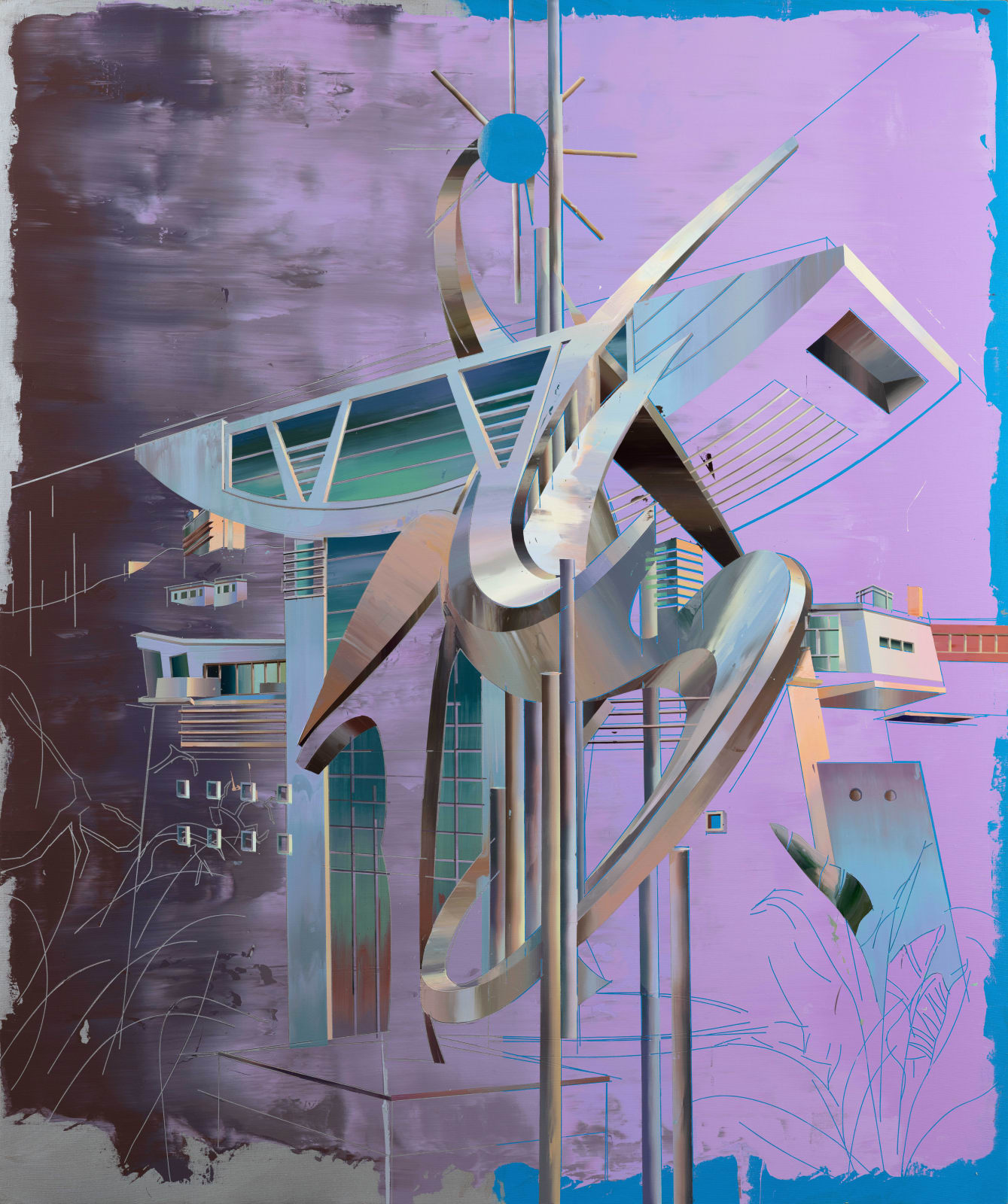



Cui Jie
The Second Generation of Peak Tower, 2019
Acrylic on canvas
250 x 210 cm
98 3/8 x 82 5/8 in
98 3/8 x 82 5/8 in
Copyright The Artist
Further images
This structure on top of the Victoria Peak was designed by British architect Terry Farrell in 1992. Over the years, he has been responsible for a number of government projects...
This structure on top of the Victoria Peak was designed by British architect Terry Farrell in 1992. Over the years, he has been responsible for a number of government projects in the UK, including the SIS Building, and Charing Cross Station, among others. The Peak Tower is Farrell’s first project outside of the UK. From the Peak Tower, he successfully expanded his practice in Asia: Incheon International Airport in Seoul, South Korea; Guangzhou South railway station in Guangzhou, China; and the whole of the West Kowloon Project, including M+ Museum. As he was working on the Peak Tower, Farrell’s firm also won the bid for the British Consulate-General, Hong Kong. Before 1997, the landscape of political architectures in Hong Kong was mostly created by British architects and firms, anticipating a continuation of the British power and perspective.
There are two figures in this painting: an abstract sculpture of a crane, and the abstract figure of the building, both serving public functions in a city. Crane is a bird that symbolises longevity and esteem in Chinese culture; it was rendered in bronze stone in the early ages, and later in stainless steel - a material imported from the West. Artistic representations of it also have become abstract and modern over the years. In China, while abstract sculptures appear abstract at first glance, they are essentially symbolist in design. For example, the cyclical, upward movement of the structure symbolises development and progress; the rings symbolise science and culture, and the sphere symbolises unity and strength. It is similar to the Chinese architectures Cui has been researching for years, combining and fusing different schools, styles, and a logic that can be described as most Chinese. The second generation Peak Tower by Farrell on the other hand is indeed Western, although it is also informed by the form of Ting - the ancient Chinese bronze vessel. Eventually it becomes a futuristic, science fiction-like imagination, an architecture that appears to be a spaceship.
There are two figures in this painting: an abstract sculpture of a crane, and the abstract figure of the building, both serving public functions in a city. Crane is a bird that symbolises longevity and esteem in Chinese culture; it was rendered in bronze stone in the early ages, and later in stainless steel - a material imported from the West. Artistic representations of it also have become abstract and modern over the years. In China, while abstract sculptures appear abstract at first glance, they are essentially symbolist in design. For example, the cyclical, upward movement of the structure symbolises development and progress; the rings symbolise science and culture, and the sphere symbolises unity and strength. It is similar to the Chinese architectures Cui has been researching for years, combining and fusing different schools, styles, and a logic that can be described as most Chinese. The second generation Peak Tower by Farrell on the other hand is indeed Western, although it is also informed by the form of Ting - the ancient Chinese bronze vessel. Eventually it becomes a futuristic, science fiction-like imagination, an architecture that appears to be a spaceship.



